Even if you’ve never heard the term “marketing tech stack” before, your company definitely has one. In the most simple terms, it’s the collection of tools you use to market your company/products.
Why do I need to worry about it if I already have a marketing tech stack?
That’s like asking, why you need to think about your diet when you already have a meal in front of you. If that meal is a bucket of fried chicken and that’s what you eat most of the time, then you probably should be thinking about your diet.
In the same way, if you haven’t considered the construction your marketing stack then it’s certainly not as optimized and efficient as it could be.
Think of it this way, marketing is a competition. You’re trying to get your product in customers hands ahead of your competitors. In order to have an edge over the competition you need to make sure that you’re using the technology best suited to your needs and that the different technologies you’re using work well together. It’s just like the America’s Cup sailing competition which is going on at the moment. The best sailors in the world are racing against each other, but skills and strategy are only half of the equation, just as important is the technology behind these boats, which fly over the water like no other yacht you’ve seen before.
What do you mean about technologies working well together?
The vast majority of companies don’t use just one software provider for all of their marketing needs (although I’m sure Google would love it if we used their services exclusively), instead we use a range of different solutions that best suit our specific needs.
These solutions generate a lot of data, which is critically important for formulating marketing strategies, but this data isn’t much use if each of our solutions are just working away independently, side by side, without interacting with the rest of our software.
You’re going to want to be able to funnel the information your analytics software provides you with into your social media and content marketing platforms. What’s the point of knowing who’s viewing your content if you’re not going to use that knowledge to perfect the sort of campaigns you’re producing? That’s why it’s a good idea of make sure the different parts of your stack integrate effectively.
Where should I start with my marketing tech stack?
Seeing that as of 2017 there are now over 5000 marketing solutions on the market, its impossible to try every different technology, but it’s important to at least be thinking about it. The following list is a good place to start. It includes the solutions we use here at Workzone as well as other leading marketing technologies.
SEO
Search Engine Optimization is one of the most effective forms of marketing because the people it targets are already looking for a solution, they’re motivated. All you need to do is make sure your product is the first one they come across and chances are they’re going to purchase. Of course, every other company has the exact same idea, so it’s difficult to climb to the top of the search results. In order to be competitive in this aspect of the market, it’s essential to have a quality SEO tool at your disposal.
1. Moz Pro
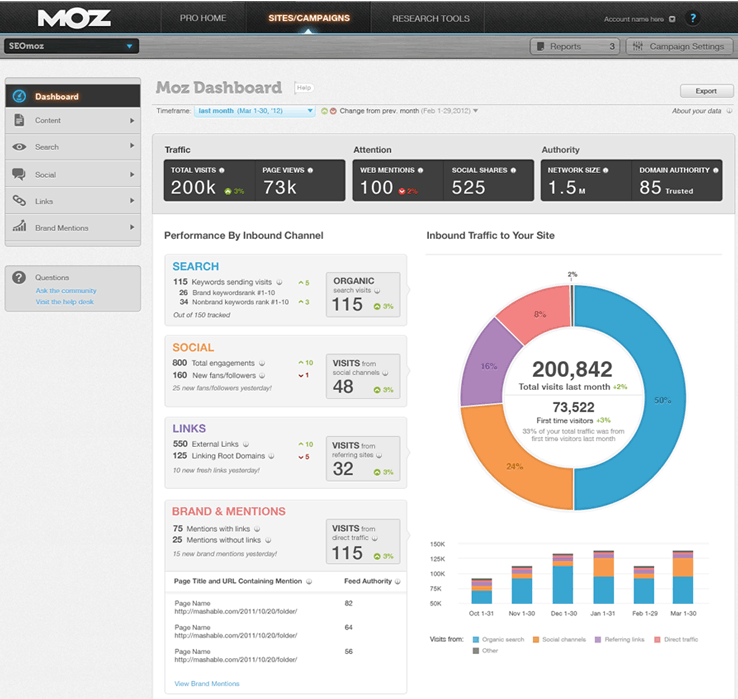
I love that Moz Pro gives a simple, clear keyword ranking. At a glance I can see where my website places on a wide range of different keywords, graph those rankings over time and compare that performance against competitors. Moz also provides useful keyword and page optimization suggestions and measures how the changes you make based on those suggestions effect your traffic over time.
Pricing: $79-$479/month
2. SEMrush

A great thing about SEMrush is that it goes beyond keywords and helps you to discover preferable content formats. It could be that you had the right keywords all along but your listicles were the wrong form of content for an audience that prefers customer testimonials. This is the sort of data I would never think of searching out, so I’m grateful to have an SEO solution handing it right to me.
Pricing: $99.95-399.95/month
Advertising Technology
There’s not much point in paying for ads if the wrong people are seeing them or, even worse, no one is seeing them at all. A good advertising technology provider will not only get your product seen by a lot of people, it will use analytics to put your content in front of your target audience, make the most out of each impression, and maximize sales.
3. AdRoll
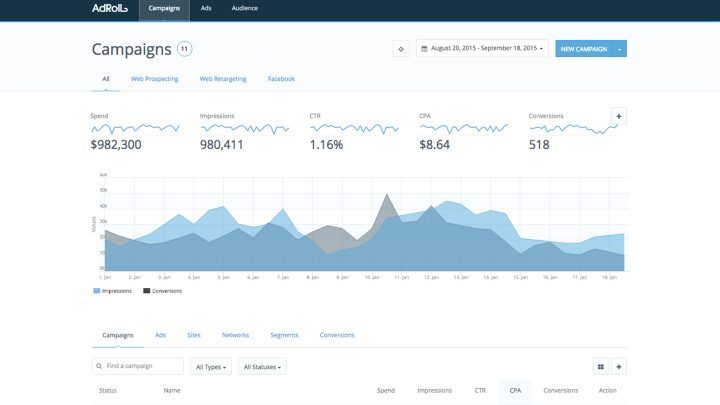
AdRoll’s ads appear on over 500 networks including Google, Facebook, Twitter, and Instagram. They also offer a state of the art retargeting function, so if a potential customer visits your site but doesn’t complete a purchase, they will later be targeted with your ads across all their devices. And thankfully, AdRoll offers some useful integrations with services like HubSpot and MailChimp to help build out your marketing tech stack.
Pricing: Available on request
Analytics
Everyone knows they need technology to monitor and analyze how people interact with content and use that information to optimize our marketing strategies–but which tools to use? Google Analytics is definitely the most well known online analytics tool, but there are plenty of other solutions available such as Kissmetrics, Crazy Egg, and Woopra.
4. Google Analytics

At Workzone, we use Google Analytics to provide the standard range of metrics like user demographics, e-commerce tracking, and email reports. Because the standard version of Google Analytics is free, it allows us to invest in additional analytics software for more advanced features.
Pricing: Free!
5. Hotjar
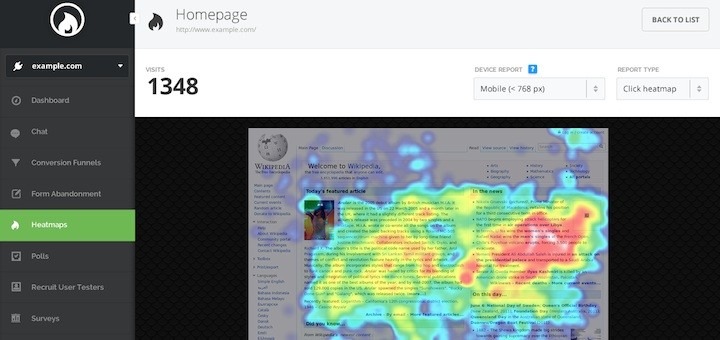
We also use Hotjar–one of our favorite tools! This is more specialized, allowing us to watch actual recordings of how users interact with our website. Not only that but we can add notes to the video while watching it that other team members will see when they view the session. I can’t think of anything more useful for user experience optimization, especially in conjunction with Hotjar’s heatmaps and customer surveys.
Pricing: $89-$989/month
Social Media
In case you haven’t noticed, social media is a preeeetty big part of marketing these days. I can’t remember the last time I checked Facebook without seeing an ad for a project management solution. What makes social media such a useful tool for marketing is the simple fact that everyone is on it. In fact, kids under sixteen are spending more time online than they do watching television, so social media marketing is already competing with the tried and true TV commercial for the title of most impactful form of advertising. Oh, and it’s a lot more affordable too.
The biggest issue with social media marketing is that there are so many social media platforms to maintain now, from the big names like Twitter and Pinterest, to the newer arrivals like Periscope and Peach. Because of this, most companies use a social media management tool like Hootsuite to allow them to schedule posts and measure their reach.
6. Buffer
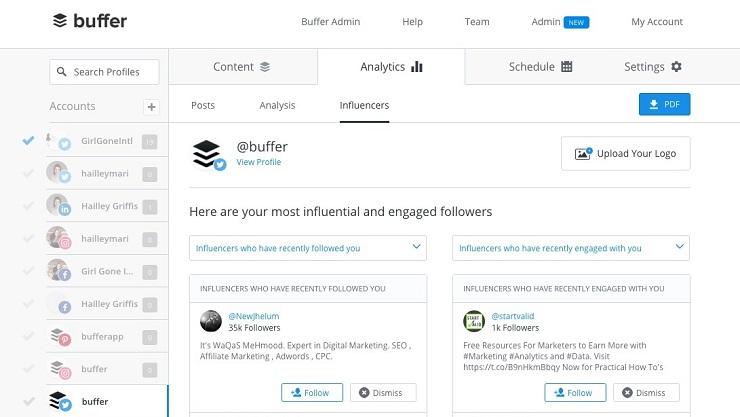
Buffer is great for social media scheduling and management, and it’s another tool that Workzone uses. Buffer’s intuitive drag-and-drop publishing and scheduling interface makes it the best solution for us.
Pricing: $99-$399/month
7. Mention

Mention provides real-time monitoring of online conversations about your brand. Not only does it give you analytics on how your company is faring on social media, you can also use it to monitor your competition and compare their performance with your own, using graphs and demographic maps.
Pricing: $25-$83/month
Marketing Automation
I’m sorry to say it but marketing automation doesn’t mean you can just sit back in a hot tub while the computer does all the work. Just because planes have autopilot doesn’t mean we don’t still need human pilots at the controls. What marketing automation does do is take care of tedious tasks like sending out mass email blasts and rotating leads to sales, giving you more time to focus on creating quality content and looking at the big picture.
8. Hubspot

Like many other companies, Workzone uses Hubspot, one of the best regarded marketing solutions on the market. Hubspot scales well from the tiniest start-up to the biggest enterprise and has smooth and intuitive design. It also integrates with apps like AdRoll, Hotjar, Dropbox, Google Analytics and more.
Pricing: $200-$2400/month
CRM
We spend a lot of time and energy trying to gain new customers, but depending on your business it can be even more vital to retain existing customers and develop good relationships with them. That’s where CRM comes in. Customer Relationship Management involves maintaining a database of customer contact information and other data, web forms, call center management and the list goes on. Rather than doing all of this over a series of spreadsheets and documents, it’s much more efficient to use a dedicated CRM solution.
9. Pipedrive

Pipedrive is a strong CRM solution. One specific feature that works wonders is the sales forecasting tool, which is great for helping to decide which deals and activities to focus on in order to reach your targets. Pipedrive also has some of the smoothest two-way integrations I’ve seen, syncing perfectly with apps like Slack, Trello, and Google Docs.
Pricing: $10-$63/user/month
10. Apptivo
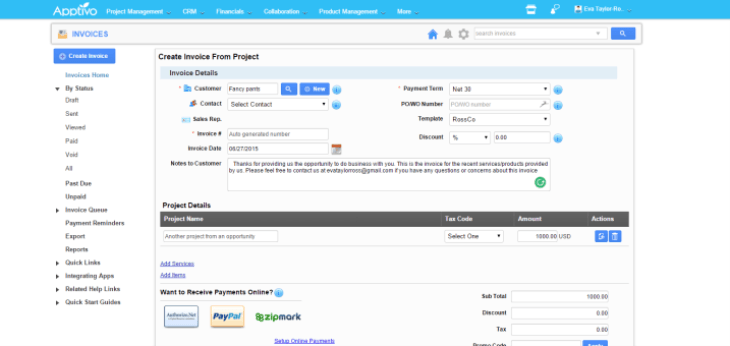
Apptivo is another CRM solution worth checking out. Its strength is its impressive flexibility. You can adapt Apptivo to any kind of business with features like territory management, win/loss analysis, and custom fields.
Pricing: Free to $20.83/user/month
Communication
Communication is arguably the most important part of your marketing stack. Because when you get right down to it, what is marketing but communicating with potential customers? It’s also the most wide ranging, as there are multiple groups you need to be communicating with: customers, team members, other teams, upper management, and more. Because of this you’ll be using multiple mediums for communication: email, instant messaging, video conferencing, forums or wikis, the list goes on.
11. Slack
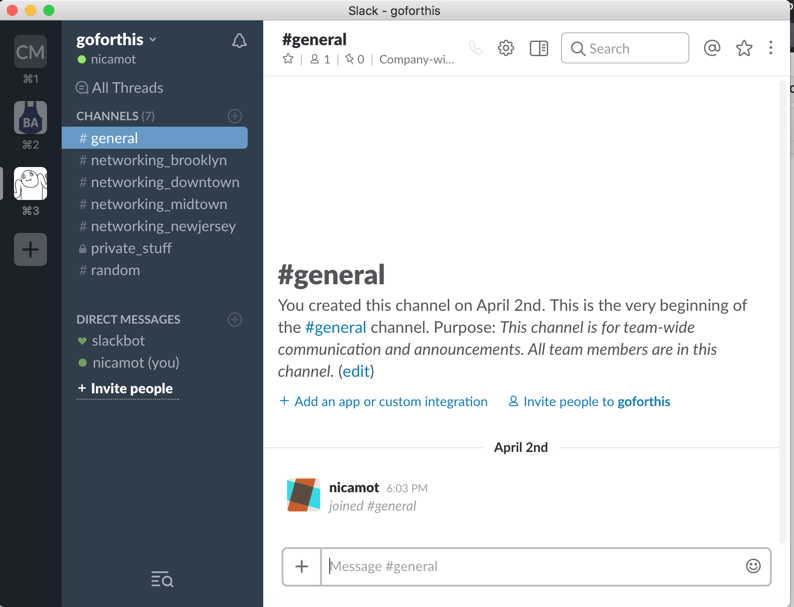
Slack is the king of messaging services. It’s more than the industry standard, because it’s the standard of literally every industry that requires internal messaging! Not only does it allow you to communicate easily with team members, messages are completely searchable, you can edit messages after posting them, set up keyword notifications, and integrate with almost anything from Dropbox to Workzone (making it easy to slide Slack into your stack). Basically, if you’re not using Slack you’re already behind. Needless to say, we use if here at Workzone.
Pricing: Free to $12.50/user/month
12. Appear.in
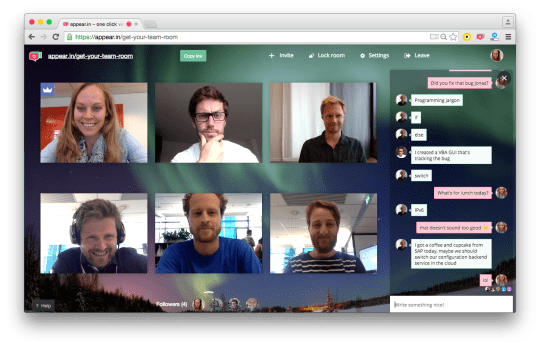
This video conferencing app is easier to use than anything I’ve ever seen. Even if you’ve never used it before, you can be talking to someone on the other side of the world within two minutes! This simplicity makes it perfect for meetings with distance customers, letting you talk face to face without having to go through any tedious set-up. It’s just as good for communicating with offsite team members. Plus it integrates with Slack, meaning our communications transfer seamlessly between the two platforms, which is exactly how you want your stack to function.
Pricing: Free to $12/room/month
Project Management
13. Workzone
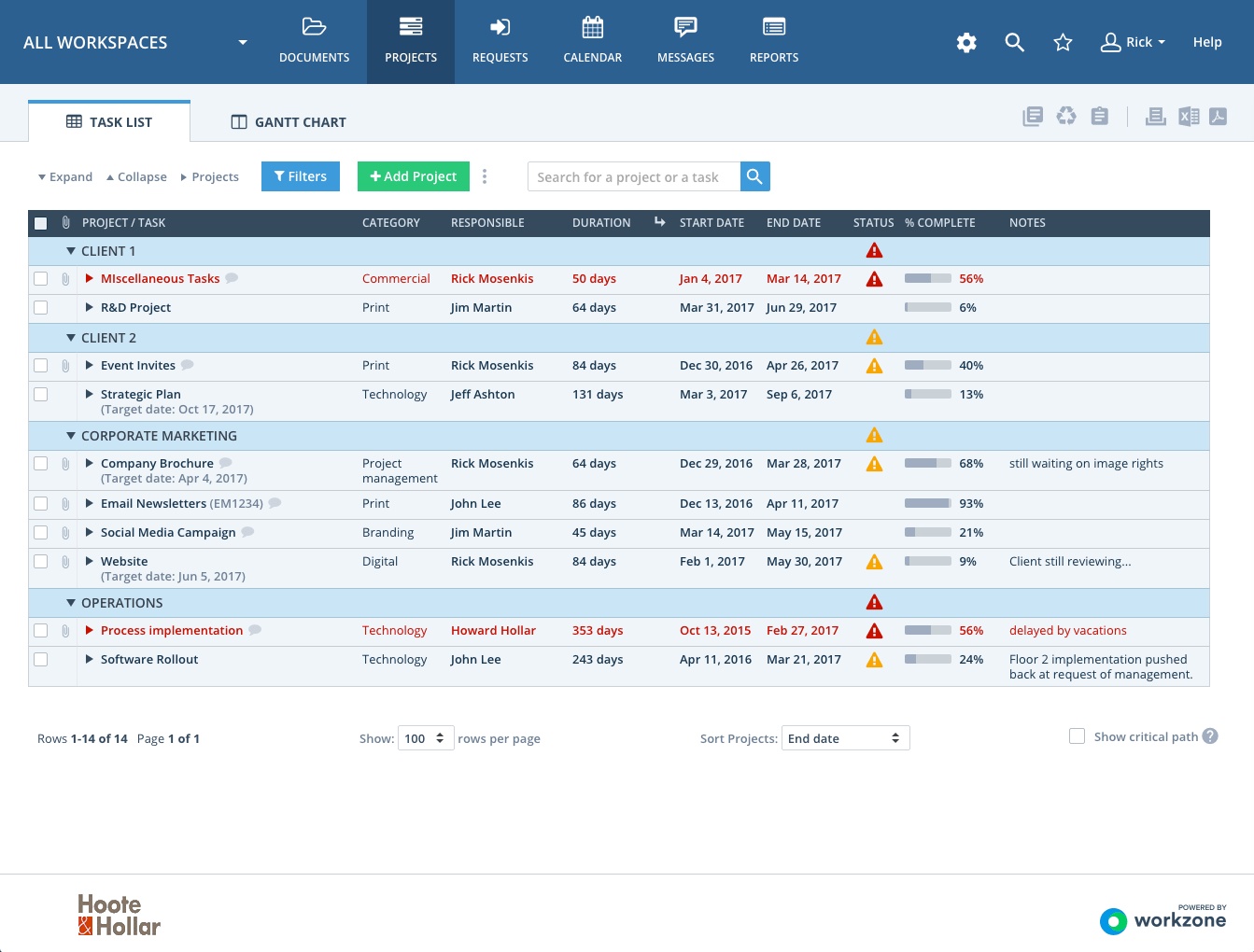
No one does their marketing in a bubble: everyone needs to know where the dollars, time and energy are spent. Workzone makes that happen for teams, especially marketers. The reason so many marketing teams and ad agencies use Workzone? It’s built with marketers in mind. It’s easy-to-use and simple, but has the reporting and budgeting features that make it great for all levels of tech-savviness. It’s also super easy to add reviewers and other contributors, so once your banner ad is done, you can send it to the right person for approval. Awesome!
Get Stacking!
So, now that you’re more aware of the possibilities for a marketing tech stack, can you think of any ways you can improve your own? Even if you answer is no, and your stack is set up perfectly for your business, that may not always be the case.
The market is always changing. In just the last year the number of marketing solutions has increased by 40%! So what’s perfect now could be lagging behind in six months time.
You always need to be on the look out for new technology developments or you’ll be running the risk of losing your competitive edge. Your stack needs to be evolving at the same rate at as the market, so it’s a constant process.
Tell us about your stack and how you’re planning to change it in the comments.




